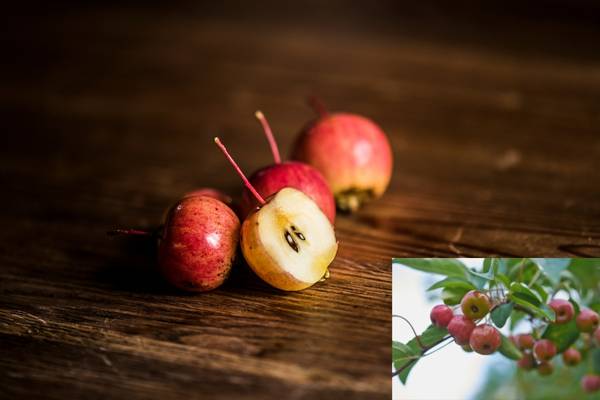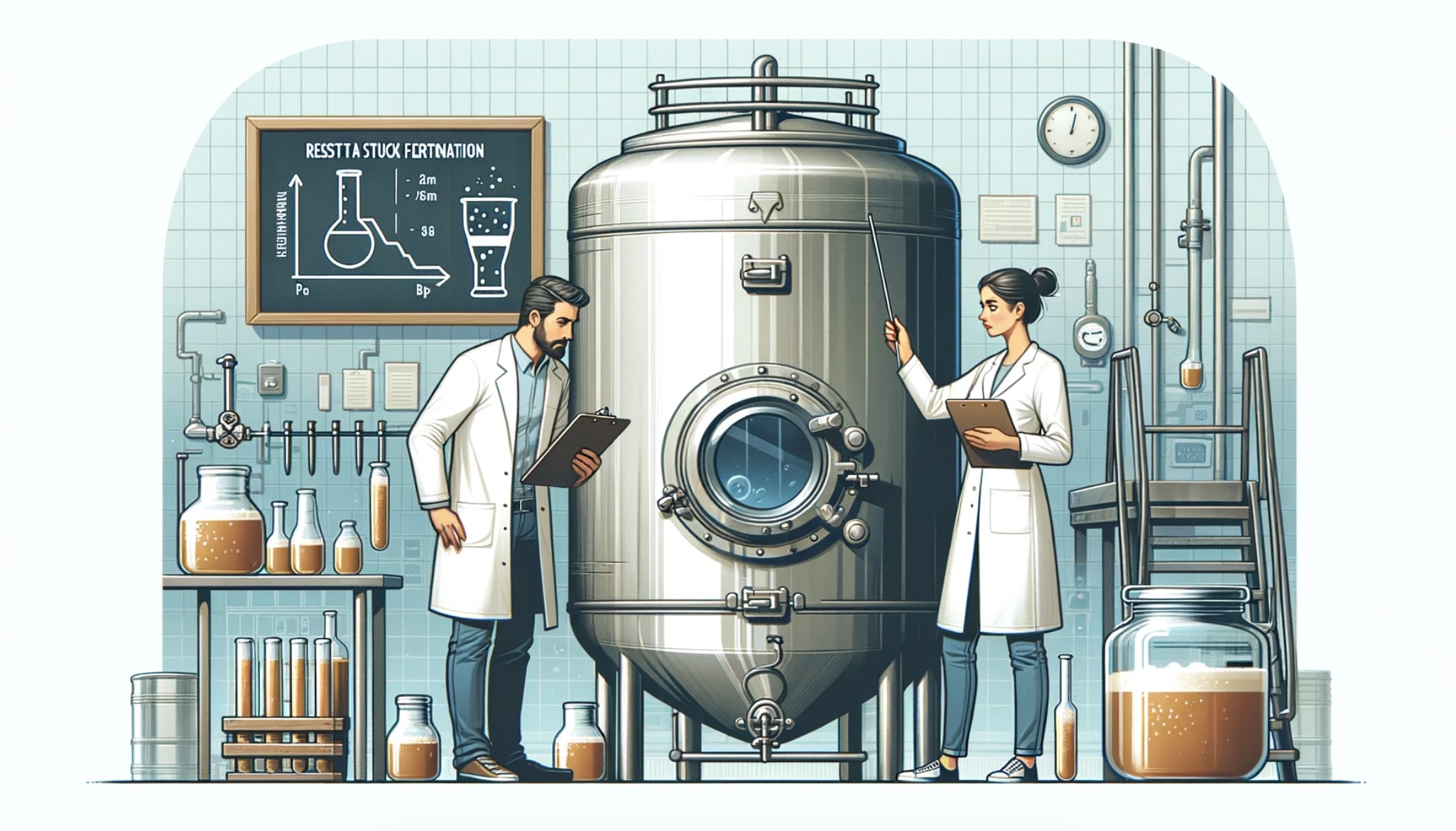The answer is a resounding yes!
You absolutely can make cider with crab apples. Believe me, I’ve done it myself, and the results were nothing short of remarkable. They do have a more tart and bitter taste, but adding some ordinary cider in will help adjust it to your taste!
I’ve had great success making hard cider using a mix (1:3) ratio or so of ordinary sweet apples and crab apples.
In this guide, I’ll take you through the entire process of making crab apple cider, from picking the apples to taking that first delightful sip.
What Are Crab Apples?
Crab apples are essentially a variety of apple that is often overlooked due to its small size and tart flavor. They’re wild apples, found growing freely in nature.

While most people might dismiss them as inedible or just for decoration, crab apples can be a delightful source of flavor, especially when used in cider making.
Why Use Crab Apples for Cider?
The secret to the impressiveness of crab apples in cider making lies in their acidity and tannin content.
Crab apples have a higher acidity and tannin content than regular apples, which contributes to a more complex, richer flavor in the cider. Plus, their tartness balances out the sweetness of the cider, resulting in a beverage that is refreshingly crisp and not overly sweet.
Mix them with other apple varieties
Mixing crab apples into your cider when brewing hard cider instead of using only ordinary apples offers several advantages:
- Higher Tannin Content: Crab apples generally have higher tannin levels than most culinary or dessert apples. Tannins contribute to the mouthfeel, structure, and complexity of a cider. When you blend crab apples with sweeter, low-tannin varieties, you can achieve a more balanced and nuanced cider.
- Acidity: Crab apples often bring a sharp acidity which can add brightness and balance to the finished cider. This can counterbalance the sweetness of dessert apples and provide a more rounded flavor profile.
- Flavor Complexity: Every apple variety contributes its unique flavor profile. By adding crab apples, you introduce additional flavors, which can make the cider more interesting and multifaceted.
- Wild Yeasts: If you’re interested in experimenting with natural fermentation, crab apples can be a source of wild yeasts. These can offer distinct fermentation characteristics compared to commercial yeast strains.
- Improved Color: Crab apples can impart a richer, deeper color to the cider, especially if they have red or pink flesh.
- Historical Authenticity: Traditional ciders, especially those from regions like the West Country in England, often used a blend of apple varieties, including bittersharp and bittersweet types. Crab apples can emulate some of the characteristics of these traditional cider apples.
- Resourcefulness: If you have crab apple trees on your property or access to them, it’s a way to make use of an otherwise overlooked resource. Many crab apple varieties go unharvested, so utilizing them in cider-making can be both practical and eco-friendly.
- Reduced Cost: If you have access to free or low-cost crab apples, blending them into your cider can reduce the overall cost of your ingredients.
- Fermentation Health: The added acidity and tannins from crab apples can create a more hostile environment for unwanted microbes, potentially leading to a cleaner fermentation.
- Texture and Mouthfeel: The tannins from crab apples can provide a fuller body and improved mouthfeel in the finished cider, making it less watery and more robust.
If you’re interested in mixing crab apples into your hard cider, it’s essential to experiment with different ratios to find a balance that suits your taste preferences. It’s also vital to taste the crab apples first; some might be too astringent or bitter on their own but perfect in a blend. The key is finding harmony between the sharpness of crab apples and the sweetness and mildness of regular apple varieties.
How to Pick and Prepare Crab Apples
Picking crab apples for cider making is a delightful process. Look for fruits that are ripe and free from blemishes.
You want to pick crab apples that are firm, vibrant in color, and have a strong apple aroma. This usually happens around October, but depends on the cultivar.

Once picked, wash them thoroughly to remove any dirt or insects. After washing, you can crush the apples to release the juice. I prefer to use a fruit crusher for this, but you can also use a juicer if you have one.

The Fermentation Process
The fermentation process is where the magic happens. Simply put, it’s the process where the sugar in the apple juice is converted into alcohol by yeast.
It’s important to properly sterilize all your equipment before starting this process to prevent any unwanted bacteria from interfering with the fermentation.

Once you’ve added the yeast to your apple juice, cover the container and let it sit for about two weeks, or until the bubbling stops. You’ll know the fermentation has ended when you no longer see any bubbles rising to the surface.
Bottling Your Crab Apple Cider
After fermentation, your crab apple cider is ready to be bottled. Make sure to use sterilized bottles to prevent any bacterial contamination, and seal them tightly. Once bottled, store the cider in a cool, dark place for at least two months. This aging process will greatly enhance the flavor of your cider.
Tasting Your Crab Apple Cider
The moment you’ve been waiting for: tasting your homemade crab apple cider. Pour the cider into a glass and take a moment to appreciate the color and smell. The cider should have a rich, golden color and a tart, apple-like aroma. When you take a sip, you should taste a balance of sweetness and tartness, with a hint of bitterness from the tannins.
Variations of Crab Apple Cider
There are many ways to tweak your crab apple cider recipe to suit your taste. You could add spices like cinnamon or nutmeg, or sweeteners like honey or brown sugar. You could even blend the crab apple juice with other fruit juices for a unique flavor. The possibilities are endless, and that’s part of the fun of cider making. Experiment with different variations and find your perfect crab apple cider recipe.
Conclusion
So, there you have it – a guide to making cider with crab apples. It’s a delightful process that yields a unique and flavorful result. And to recap, here are ten facts about crab apple cider:
- Crab apples can indeed be used to make cider.
- Crab apples have a higher acidity and tannin content than regular apples, contributing to a richer cider.
- You should pick crab apples that are firm, vibrant in color, and have a strong apple aroma.
- Properly sterilize all your equipment before starting the fermentation process.
- Fermentation takes about two weeks, or until the bubbling stops.
- Use sterilized bottles for storing your cider.
- The cider should be stored in a cool, dark place for at least two months before drinking.
- The cider should have a rich, golden color and a tart, apple-like aroma.
- It’s fun to experiment with different variations of crab apple cider.
- Making crab apple cider is a rewarding experience that every cider lover should try at least once.
In my personal experience, making cider with crab apples has been a journey of discovery and delight. I’ve found that the tartness of the crab apples brings a unique flavor to the cider that is unlike any other. So, the next time you come across a crab apple tree, give cider making a try. You might just find your new favorite beverage.
FAQs
Can you make apple cider vinegar from crab apples?
Yes, you can make apple cider vinegar from crab apples just like you would with regular apples.
What can you do with crab apples?
Crab apples can be used for a variety of purposes. They can be eaten raw or cooked to make delicious preserves, jellies, and sauces. They can also be used in baking, such as in pies, tarts, and cakes. Additionally, crab apples can be fermented to make cider or used to infuse flavor in vinegar.
Are all crab apples edible?
Not all crab apples are edible for humans.
Can you make crabapple cider?
Yes, it is possible to make crabapple cider.
Are all crab apples safe to eat?
Not all crab apples are safe for human consumption. Some varieties of crab apples can be quite tart and have a bitter taste, making them less enjoyable to eat. Additionally, certain crab apples may contain higher levels of toxins or pesticides, which can be harmful if consumed in large quantities. It’s always best to check the specific variety of crab apple and ensure it is safe for consumption before eating.
Are crab apples good for anything?
Yes, crab apples can be used for various purposes. They can be used to make jams, jellies, and preserves. They can also be used in baking, such as in pies, tarts, and cakes. Additionally, crab apples can be used to make cider or vinegar.




